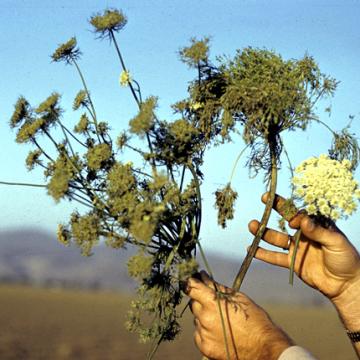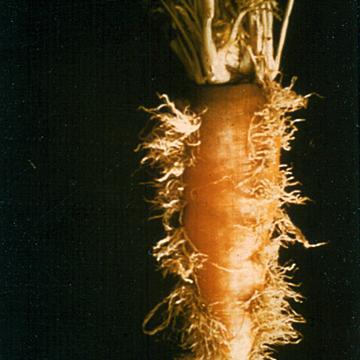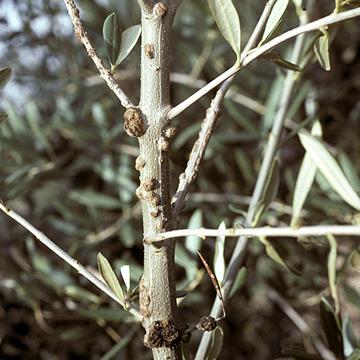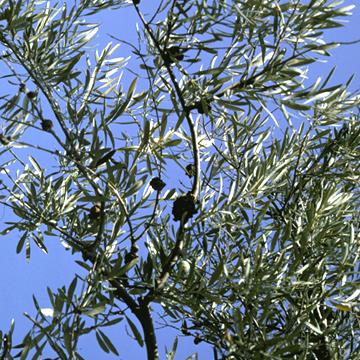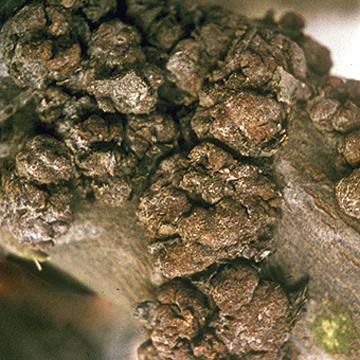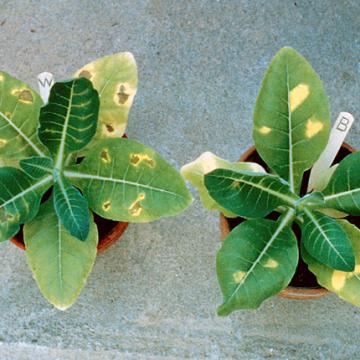DISEASE: Carrot yellows
HOST: Carrot
Flowers with shoot proliferation (witches’-broom) (left). Healthy flower (right). Virescence and phyllody of flower parts are common.
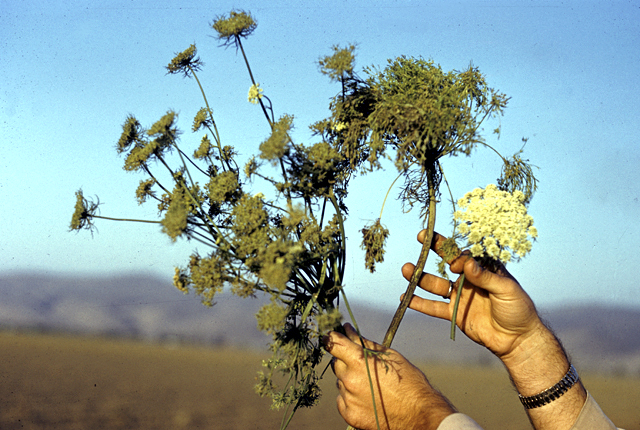
Carrot yellows | Carrot
DISEASE: Carrot yellows
HOST: Carrot (Daucus carota)
PATHOGEN: 'Candidatus Phytoplasma asteris'
PATHOGEN SYNONYM: Phytoplasma Aster yellows group
SOURCE: M. Schroth
DISEASE: Carrot yellows
HOST: Carrot
Carrot with proliferation of roots. Initial symptoms include yellowing and narrowing of veins of young leaves. The entire leaf later becomes necrotic.
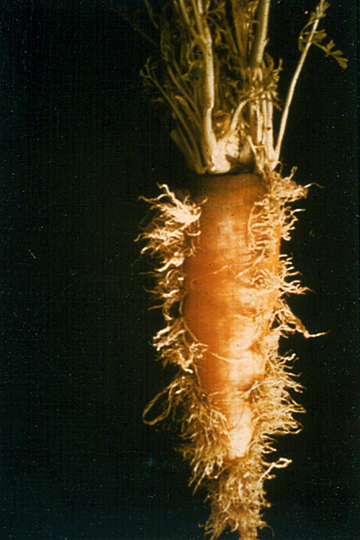
Carrot yellows | Carrot
DISEASE: Carrot yellows
HOST: Carrot (Daucus carota)
PATHOGEN: 'Candidatus Phytoplasma asteris'
PATHOGEN SYNONYM: Phytoplasma Aster yellows group
SOURCE: G. S. Abawi
DISEASE: Olive knot
HOST: Olive
Multiple infections of young stems. The bacterium invades vascular tissues during certain times of the year and may be isolated from branches that appear healthy.
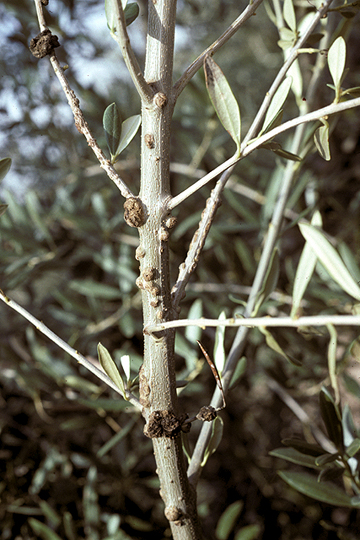
Olive knot | Olive
DISEASE: Olive knot
HOST: Olive (Olea europaea)
PATHOGEN: Pseudomonas savastanoi pv. savastanoi
SOURCE: M. Schroth
DISEASE: Olive knot
HOST: Olive
Tree with knots/galls on branches along with twig dieback, which is associated with knots. Fusarium and Diplodia spp. infect through knots and are thought to be main reason for dieback.
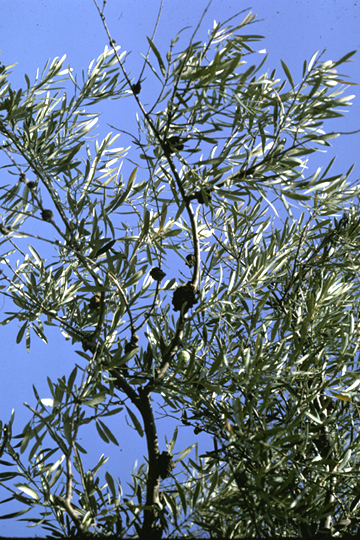
Olive knot | Olive
DISEASE: Olive knot
HOST: Olive (Olea europaea)
PATHOGEN: Pseudomonas savastanoi pv. savastanoi
SOURCE: M. Schroth
DISEASE: Olive knot
HOST: Olive
Multiple infections on olive branch. Knots at this stage begin to die from the outside in and are infected by several fungi.
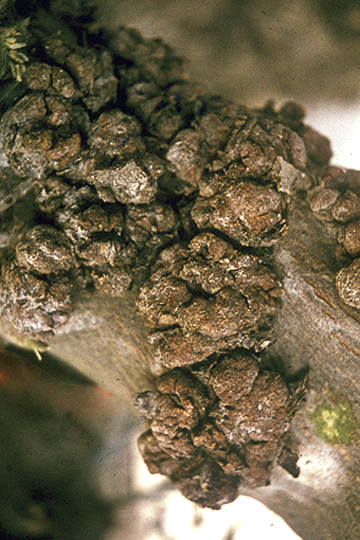
Olive knot | Olive
DISEASE: Olive knot
HOST: Olive (Olea europaea)
PATHOGEN: Pseudomonas savastanoi pv. savastanoi
SOURCE: M. Schroth
DISEASE: Wildfire (Angular leaf spot)
HOST: Tobacco
Characteristic symptoms are necrotic, brown spots with angular margins surrounded by distinct yellow halos. The halos are caused by the production of tabtoxin.
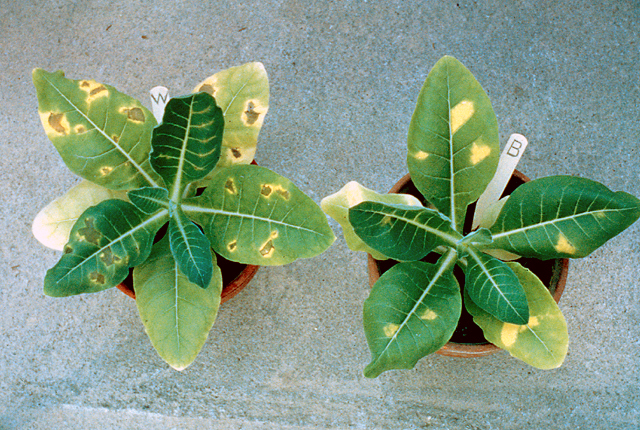
Wildfire (Angular leaf spot) | Tobacco
DISEASE: Wildfire (Angular leaf spot)
HOST: Tobacco (Nicotiana tabacum)
PATHOGEN: Pseudomonas syringae pv. tabaci
SOURCE: G. Lucas


